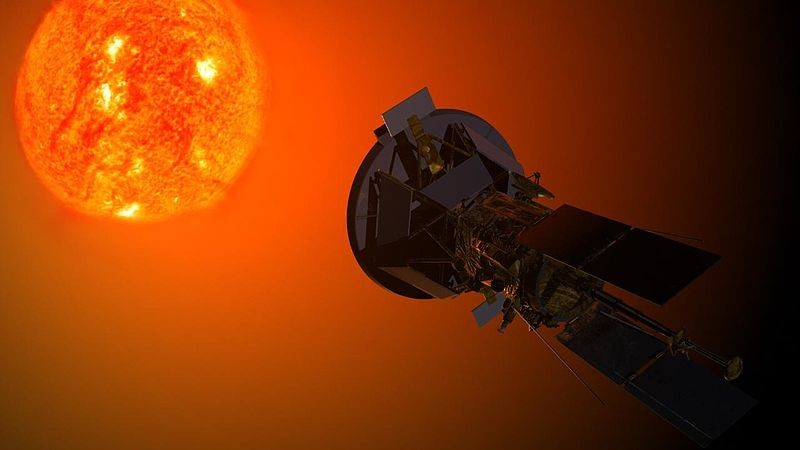The American probe Parker Solar Probe has just survived its tenth encounter with the Sun, setting two new records in the process. On November 21, the spacecraft approached less than 8.5 million km from the surface of our star, traveling at more than 586,000 km/h.
Just under three years ago, NASA deployed the Parker Solar Probe. Its objective is to get close enough to the Sun in order to answer two fundamental questions.
First:why is the Sun's atmosphere so much hotter than its surface? The corona is indeed heated to a million degrees against only several thousand degrees for the solar surface. NASA would also like to clarify the origins of the solar wind. The corona serves in effect as a launching pad, accelerating to incredibly high speeds the stream of charged particles that bathe the Solar System. Through this mission, scientists would like to better understand this process.
Before reaching its target, the ship must make twenty-four orbits around the Sun, getting ever closer. On November 21, Parker completed her tenth close encounter, having relied on the gravitational pull of Venus. During this maneuver, the explorer approached within 8.5 million km of the surface of the Sun . Never has a man-made object rubbed so close to our star.
Parker also took the opportunity to break his own speed record, operating this maneuver at over 586,860 km/h , making it the fastest artificial object ever recorded.

And it's not over. It is indeed expected that it will approach within less than six million km of the surface of the Sun in 2025, at a crazy speed of 692,000 km/h . How then to avoid burning?
You must first understand the difference between temperature and heat, and take into consideration the density of the space. Temperature is a measure of how fast particles move, while heat measures how much energy they transfer. The fewer particles there are, the less energy is released. Think of the difference between putting your hand in a hot oven versus putting it in a pot of boiling water. In the oven, your hand will be able to withstand much higher temperatures than in water where it must interact with many more particles.
Here it's a bit the same. The corona is indeed less dense compared to the visible surface of the Sun, so if the particles can indeed move very quickly, the spacecraft will interact with fewer hot particles.